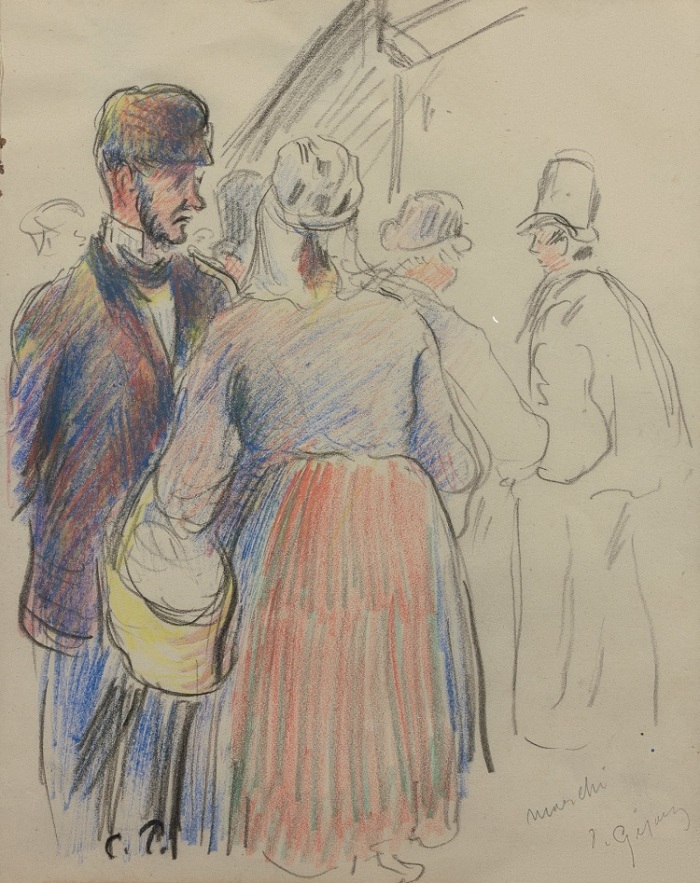Parce que oui, la Culture française – comme d’ailleurs tous les cultures qui déferle vers Paris – appartient au monde qu’elle a si souvent rayonné, et il faut refusé de la laisse etre confiné et sequestré par les forces de l’Obscurantisme.
For subscription and sponsorship opportunities starting at $69, contact Paul Ben-Itzak at artsvoyager@gmail.com.
The Open Studios or Portes Ouvertes de Belleville and those of the Prè Saint-Gervais, performers including Berlin’s Constanza Macras, Portugal’s Vera Mantero, a major exhibition devoted to Camille Pissarro paintings rarely seen in France, Belgium’s Alain Platel, Spain’s Israel Galvan, Crystal Pite — these are just a few of the major cultural happenings in Paris and environs this Spring that the Arts Voyager and Dance Insider will be able to cover with your support.
Many of you first read about these internationally renowned artists and events for the first time in English in our journals and, continuing our 20-year mission of bringing you stories not told elsewhere, we’ll also be reporting on Giulio D’Anna, a Netherlands-based Italian choreographer whose “OOOOOOO” is inspired by Zagreb’s “Museum of Broken Relationships,” and Jasna Vinovrski’s “Lady Justice,” addressing the relationship between justice and art. Speaking of art, we’d also like to bring you Yasmina Reza’s “Art” as interpreted at the Theatre de la Bastille by the pioneering Belgium theater company STAN . And of intersections between art and society, this year’s Chantiers (Building Projects) d’Europe festival at the Theatre de la Ville features countries in the front lines of the refugee crisis, notably in six short films from Greece addressing this topic and a public brainstorming session with artists from six countries. Most of all we’ll be able to bring you into the studios of the 200+ artists taking part in the Open Studios of Belleville — a neighborhood which in its very MULTI-CULTURAL contours and dimensions provides the best retort to the cloistered vision of French culture represented by the National Front. (We share the FN’s stated pride in traditional French culture; we simply argue that this definition is too limited and does not do justice to the grandeur and ouverture to the world that has always been French culture.) Click here to read our coverage of last year’s Open Studios / Portes Ouvertes de Belleville.
Already a subscriber or sponsor? Please forward this story to your colleagues. Want to become one? Contact us at paulbenitzak@gmail.com . Subscribers receive full access to our 20-year archive of more than 2,000 reviews by 150 leading artist-critics of performances on five continents, plus five years of the Jill Johnston Letter as well as Arts Voyager art galleries, film reviews, and travelogues from Paris, New York, and across the U.S.. Sponsors receive this plus advertising on The Dance Insider, and/or the Arts Voyager.
France, too, is at the crossroads. On May 7 the country will choose between the fear represented by the National Front and the hope and optimism represented by Emmanuel Macron. Between closure and opening. In the campaign between these two ‘cultures’ that has raged in this country for the past two years, CULTURE has been all but forgotten. (Among Macron’s refreshing ideas: More library hours.) With your help, we will be able to do our part in restoring some light to what has always been France’s principal calling card around the world. Our calling for more than 20 years.Many thanks and
Cheers,
Paul
artsvoyager@gmail.com


 Camille Pissarro, “Marché à Gisors.” Pencil and colored pencil on paper, 20.4 x 16.5 cm. Signed with the initials at lower left and titled at lower right. Artcurial pre-sale estimate: 15,000 – 20,000 Euros. Image courtesy and copyright Artcurial.
Camille Pissarro, “Marché à Gisors.” Pencil and colored pencil on paper, 20.4 x 16.5 cm. Signed with the initials at lower left and titled at lower right. Artcurial pre-sale estimate: 15,000 – 20,000 Euros. Image courtesy and copyright Artcurial.